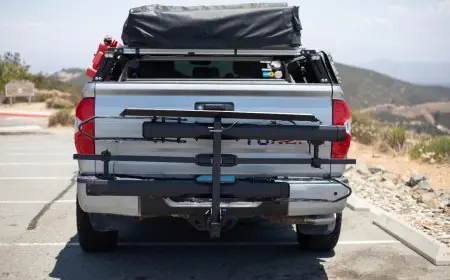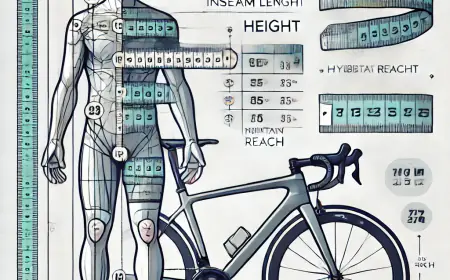How to Measure Bike Size Correctly: Easy Guide for the Perfect Fit
Learn how to measure bike size for the perfect fit! This guide covers inseam measurement, bike size charts, and tips to ensure comfort, performance, and safety on every ride.

Finding the right bike size is crucial for comfort, performance, and safety. Whether you're a seasoned cyclist or a beginner, understanding how to measure bike size ensures you get the most out of your ride. This guide will walk you through the steps to determine the perfect bike fit for your body type and cycling needs.
Why Measuring Bike Size Matters
Before diving into the steps, it’s important to understand why measuring bike size is essential. A properly sized bike:
-
Enhances riding comfort and reduces fatigue.
-
Improves pedaling efficiency and overall performance.
-
Minimizes the risk of injuries caused by poor posture or strain.
Whether you're buying a road bike, mountain bike, or hybrid, getting the right size is the first step to an enjoyable cycling experience.
Steps to Measure Bike Size
1. Measure Your Inseam
Your inseam length is the foundation for determining the correct bike size. Here’s how to measure it:
-
Stand against a wall with your feet shoulder-width apart.
-
Place a book between your legs, spine facing up, and pull it up to your groin.
-
Measure the distance from the top of the book to the floor.
This measurement will help you determine the standover height of the bike, which is the distance between the top tube and the ground.
2. Use a Bike Size Chart
Most bike manufacturers provide bike size charts that correlate inseam measurements with bike frame sizes. These charts are typically categorized by bike type:
-
Road bikes: Measured in centimeters (cm).
-
Mountain bikes: Measured in inches (in) or small/medium/large sizes.
-
Hybrid bikes: Often use a similar sizing system to road bikes.
Refer to the manufacturer’s chart to find the recommended frame size based on your inseam.
3. Test the Reach and Handlebar Height
Once you’ve narrowed down the frame size, test the bike’s reach and handlebar height:
-
Reach: Ensure you can comfortably grip the handlebars without straining your back or arms.
-
Handlebar Height: Adjust the handlebars to a position that supports a natural riding posture.
These adjustments are especially important for long rides, as they prevent discomfort and improve control.
4. Consider Your Riding Style
Your cycling goals also play a role in determining the right bike size:
-
Road cycling: Opt for a slightly larger frame for better aerodynamics.
-
Mountain biking: Choose a smaller frame for improved maneuverability on trails.
-
Commuting: A medium-sized frame with an upright posture is ideal for comfort.
Learn more about Somers Town Community Sports Centre: Building Wellness, Inclusivity, and Youth Engagement.
Tips for Ensuring the Perfect Fit
1. Test Ride Before Buying
Always test ride a bike before purchasing. Pay attention to how it feels and make sure you can easily reach the pedals, handlebars, and brakes.
2. Consult a Professional
If you’re unsure about your measurements, visit a local bike shop. Professionals can provide personalized recommendations based on your body type and riding preferences.
3. Adjust as Needed
Even after purchasing, you may need to fine-tune the seat height, handlebar position, or stem length to achieve the perfect fit.
By following these steps, you’ll be well on your way to finding a bike that fits like a glove. Happy cycling!
What's Your Reaction?




















































































